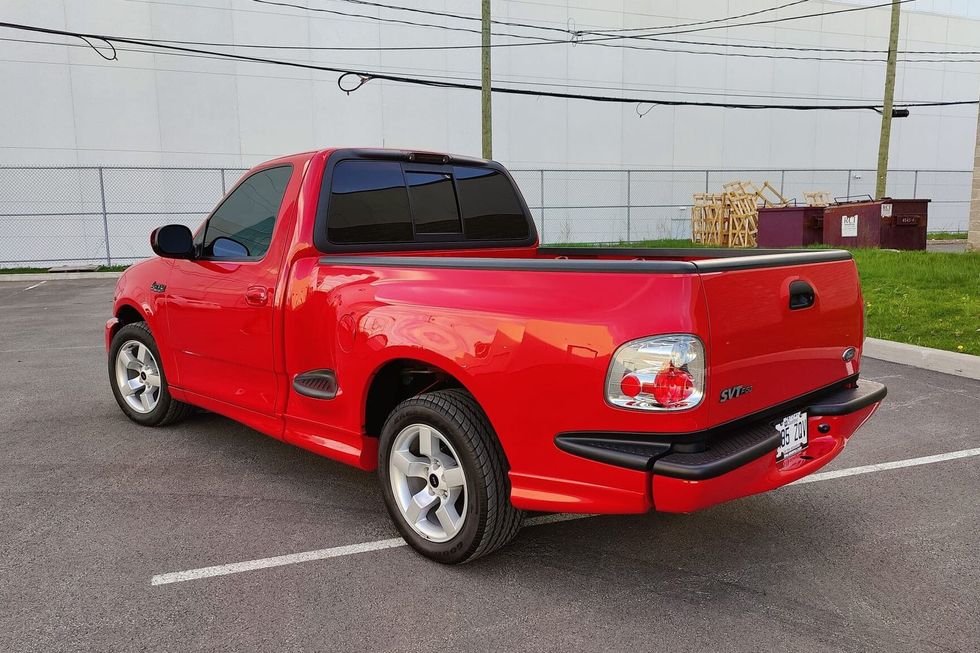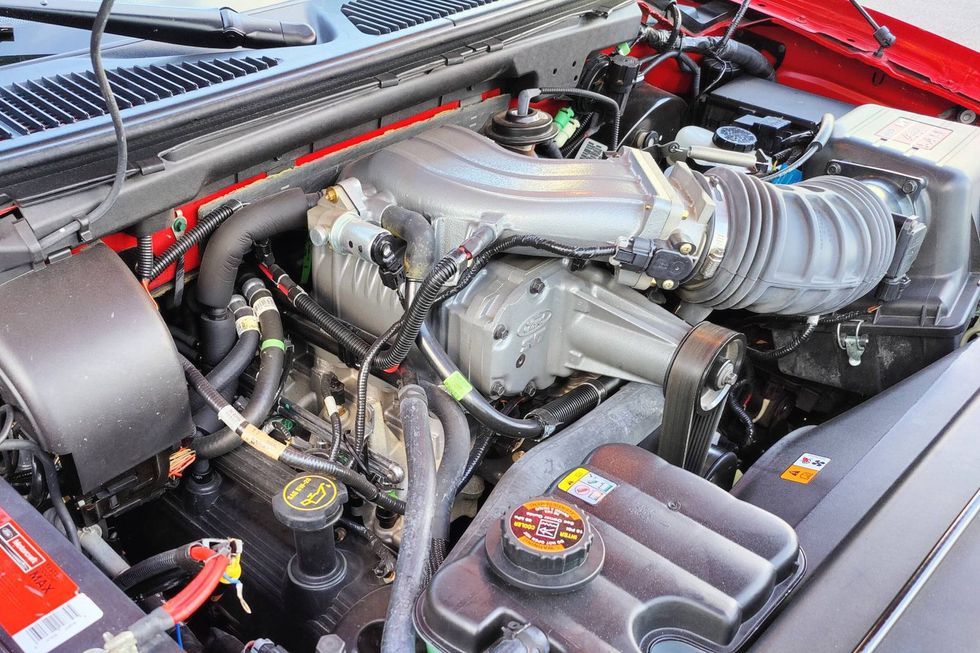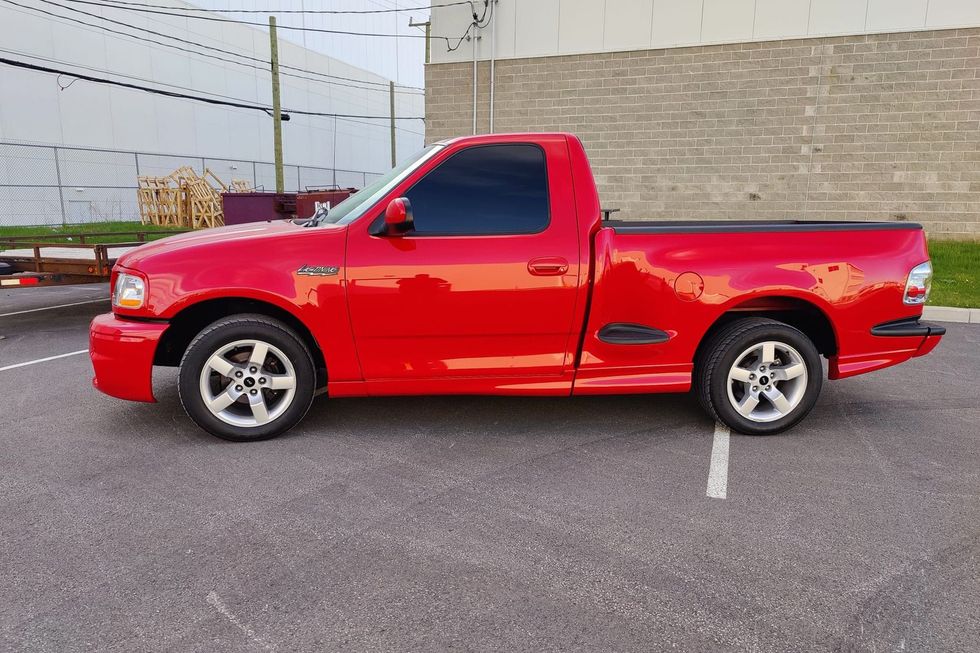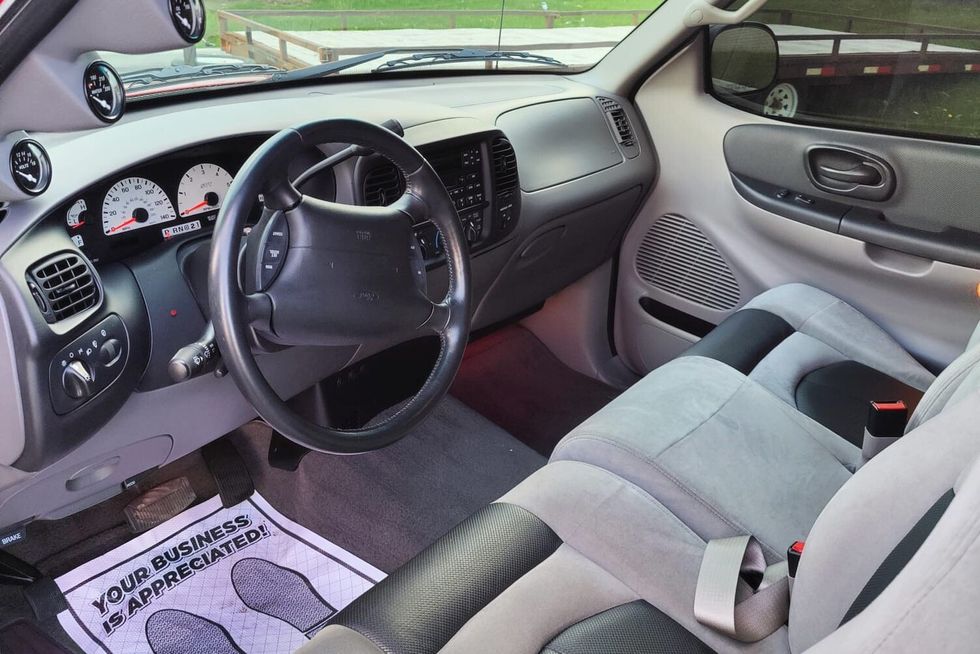Balancing Act - 1971 Mercury Cougar
1971 Cobra Jet 429 Cougar convertible cut a fine line between performance and conspicuous consumption
09/23/2018


Even when new, the 1971-73 Cougar suffered from an identity crisis.
The problem had cropped up in its family history. Even though Mercury advertised the first-generation Cougar as "The Man's Car," it found a large following among women of a certain age, falling in the category of "secretary's car."
The cat had taken on many different guises during those first four model years-Trans-Am near-victor in 1967, drag race record-setter with Don Nicholson at the helm and hero-worshiper in the Dan Gurney special editions-despite Mercury's insistence on selling the car as a personal luxury vehicle.
Even the concept of a luxury sports car seems a bit contradictory. Or at least compromised. Mercury executives and ad writers nearly made blatant the division's intended emulation of Jaguar in concept, décor and name, but seemed to have a tough time deciding to what extent they wanted to balance power and comfort. For a while, it seemed as though Mercury would just make press announcements to adjust how well the cars fit their intended niche. On the introduction of the Cougar, Paul Lorenz, general manager of the Lincoln-Mercury Division in 1967, declared, "Changes in car-buying tastes have occurred so rapidly in the past few years.... The sought-after qualities of today are grace, style, sophistication, quiet performance, luxury and understated elegance."
Right. We'd all describe the factory-tuned sticker-warrior Eliminator edition of the Cougar as "understated."
And like many of today's hipsters slipping on fur-collared coats in ostentatious displays of plumage, the Cougar puffed up-if mostly in image-when Lorenz's successor, Matt McLaughlin, expressed impatience with the performance models the division had been pounding out and longed for a return to upscale family cars, reflected in the more formal lines of the 1971-73 Cougars.

Let's get one thing straight, though: The 1971-73 Cougar really only looks much bigger than its immediate predecessors. Granted, it grew in wheelbase, length and width, to the tune of an inch, half an inch and about 1.5 inches. But the weight of the convertible increased only by about 80 pounds and the weight of the hardtop by 50. Consider that the revisions implemented for the 1969 model year made more drastic dimensional adjustments-by about six inches in total length, nearly three inches in width and about 200 pounds. In comparison, the 1971 belt-loosening could conceivably be attributed to an all-thumbs intern who didn't know his way around a slide rule.
It seemed as though Mercury had finally decided to stop the teeter-totter in 1971 and go full-blown luxury with just a nod and a wink in the general direction of sport and performance. That snarling kitty cat in the commercials-Chauncey was his name, by the way, he also had screen credits in the Six Million Dollar Man and Lassie-likely continued his starring role for the velvety sheen to his coat rather than his hunting prowess.
Ford split its pony car duo to allow the Cougar to handle competition coming from the Monte Carlo, Grand Prix, Charger and Satellite Sebring. The usual culprits of rising insurance costs, tightening emissions and fuel crises appeared to bring an early curtain for heavy right-foot Cougar buyers. But not entirely so.
Just as gross horsepower figures remained through 1971, so did the wide-open option sheet. And for one final year, the legendary Cobra Jet name continued. Where Chevrolet had its alphanumeric series of tuned engines, and Pontiac had its Ram Airs, Ford used by-and-large off-the-shelf parts and a somewhat more colorful name to hop up its big-blocks.
Bob Tasca, of the legendary dealership in Providence, Rhode Island, got the ball rolling in late 1967 when, disappointed by the paucity of the performance offerings from Dearborn, he slipped a modified Police Interceptor 428-cu.in. big-block V-8 into some Mustang 390 GTs and created the KR-8.
Magazine coverage and Tasca's persistence earned him an audience with Henry Ford II, who ordered the KR-8 through its paces. Impressed, Ford tweaked the 428-cu.in. V-8, created the Cobra Jet moniker (both because they still had the rights to the Cobra name and because they wanted to take a jab at Chevrolet's Turbo-Jet line of big-block engines) and released the engine in the Mustang midway through the 1968 model year.
Though the 1968 Cougar GT-E started out with the 390hp, 427-cu.in. big-block, the 335hp Cobra Jet 428 trickled down to that model partway through the year and proliferated across the entire Cougar lineup in 1969 and 1970.
What has one cubic inch got to do with anything, you ask? Well, to start with, it's all posturing. The 4.23-inch bore and 3.78-inch stroke of the 427 actually calculates out to 424.97 cubic inches, while the 4.13-inch bore and 3.98-inch stroke of the 428 comes to 426.54 cubic inches. Whatever the reasons for selecting the odd number to describe the first of the two (might it be the Hemi's 426 cubic inches?), Ford certainly wouldn't come short with the second, but still had to pick a unique descriptor. Four-twenty-eight it was, then.
It wouldn't be until the introduction of the 360hp Thunder Jet 429 as an option on the 1968 Thunderbird that Ford would get their advertised cubes close to actual measurements. The 428.79-cu.in. engine used the Lincoln 460 V-8's 4.36-inch bore, but dialed the stroke way back, from 3.85 inches to 3.59. That's even less stroke than the 427-an engine that was known for high-rpm antics-so you can bet the 429 would feel better at home in luxo-cruisers or 7,000-rpm NASCAR flyers than in dragstrip monsters.
A Hemi-headed Boss version of the 429 appeared in 1969 and 1970 for the Mustang and, at least theoretically, the Cougar, but even Larry Shinoda bragged of besting a Boss with his Cobra Jet 428.
Mitch Lewis, who runs the Cobra Jet 429 Cougar registry, said the 429, in all its forms, never gained much of a reputation as a performance engine because it existed for just a few years.
"The 428 definitely had more of a history for drag racing," Lewis said. "Even though the Boss was primarily used in NASCAR, it was also used in NHRA racing. And the 429 is a high-winder. It's like the 351C, in that it didn't have the best low-end torque, but when they hit their torque band, they go. Those big ports in the heads just like a little bit of rpm."
The Thunder Jet 429, part of the "385" big-block family, made do with typical wedge-shaped, canted-valve heads. Actually, it more resembled a well-fertilized Cleveland small-block V-8 than it did the 427 and 428, both part of the FE engine family. In fact, the block shares a thin-wall, skirtless design with the 289/302/351 engines, and the heads share the 351 Cleveland engine's high-flow structure.
"The 429's biggest drawback was its weight," Lewis said. "It's about 100 pounds heavier than a 428."
With a block drilled for four-bolt main caps (Super Cobra Jet only in 1970, the regular Cobra Jet would upgrade from two-bolt in 1971), a stronger crankshaft and connecting rods, cast pistons (the Super Cobra Jet would get forged pistons of an identical casting) and screw-in rocker studs, Ford created the basis for the Cobra Jet 429. While the Thunder Jet ran 2.08-inch intake and 1.65-inch exhaust valves under the 605cfm Autolite 4100D carburetor, the Cobra Jet increased to 2.24-inch intake and 1.72-inch exhaust valves and a 715cfm Rochester Quadrajet carburetor, all controlled by a cam with 282 degrees of duration on the intake and 296 degrees on the exhaust. The 10.5:1 compression ratio shimmied up to 11.3:1 in the Cobra Jets. Twin exhaust pipes removed the gases.
The modifications mounted to an advertised 370hp at 5,400 rpm and 450-lbs.ft. at 3,400 rpm. Super Cobra Jet versions of the engine, heralded in some sales materials at 375hp at 5,600 rpm, benefited from an oil cooler, 780cfm Holley carburetor and solid-lifter camshaft with 300 degrees of duration. Optional through-the-hood ram air did nothing for the advertised horsepower figures, but it's more than plausible Ford kept a leash on extravagant horsepower claims just to keep the insurance companies at bay.
Though prototype pictures seemed to hint at Ford's intent to replace all Cobra Jet 428s with Cobra Jet 429s in 1970, just the Torino and the Cyclone made it out the door with the Cobra Jet 429 that year. The Mustang and Cougar, slated for an extensive revision in 1971, would have to wait.
Lewis said Ford shelved the plans for Cobra Jet 429-powered 1970 Mustangs and Cougars because the engine bay, inherited from the earliest Falcon-based Mustangs, proved just too tight. "Even half an inch of an increase in width in the old engine bay would make things miserable," he said.
Cougar sales, meanwhile, continued their slide, despite the introduction of a convertible and several limited-edition models. After an impressive first couple of years, total production fell to slightly more than 100,000 in 1969 (down by 12 percent), then about 72,000 in 1970 (down by 28 percent) and not quite 63,000 in 1971 (down by 13 percent). Mustang sales slid just as precipitously-falling by six percent, 34 percent and 24 percent those same years.
Little surprise, then, that only a handful of customers ordered the Cobra Jet 429 in a Cougar. According to copyrighted statistics supplied by Marti Auto Works, which licenses Ford Motor Company's production figures from 1967-73, 1,865 Mustangs came with either the Cobra Jet or Super Cobra Jet, while just 448 Cougars had the Cobra Jet. Mercury never produced a Super Cobra Jet Cougar.
On the introduction of the new bodystyle, though, Mercury did its best to plug the Cobra Jet option. Lewis said Mercury built about 16 convertible ram-air Cobra Jet Cougars with a white top and white interior, equipped with the Toploader four-speed transmission, Traction Lok rear axle and all sorts of interior amenities, painted them all a metallic blue and sent them to different regions across the country for previews and for testing. All 16 rolled out of Dearborn the first or second day of production, and the first two, built August 3, 1970, headed straight for the Las Vegas Convention Center for the official introduction of the 1971 Cougar. Of those two, one has since been crushed.
Tom Shiveley, a 48-year-old quality control specialist for Ford Motor Company, had just finished the restoration of his Mustang GT California Special in late 2001 when he spotted the other one for sale in California. The history of the car about knocked the Indianapolis, Indiana, native out of his chair, so he grabbed his father and flew out to inspect the Cougar. Or, more appropriately, inspect the dozens of boxes that contained parts for the Cougar.
As the previous owner told him, the car had seen a good amount of drag racing in the intervening years and thus lost some parts-including the air cleaner for the ram air setup-and gained others. A restoration attempt 12 years prior had gone only so far as a repaint in the stock Bright Blue Metallic, but it had changed hands unfinished twice since then.
"My father was a service representative for Ford, so we both looked at it and said that it was a no-brainer," Tom said. "So I wrote a check on the spot."
Back in Indianapolis, Tom decided he wanted the car ready for Ford's 100th anniversary celebration, so he shipped it to Lewis, who had just finished the restoration of his own Cobra Jet 429 Cougar, a hardtop. Lewis, who claims to just be a hobbyist, said he really just focused on the details that made the car unique and had a friend of his perform most of the mechanical restoration work.
The convertible came together with time to spare. Tom said he has since enjoyed it to the tune of about 2,000 miles a year, driving mostly to shows. "I actually like the big bodystyle-it sits real low to the ground, has a real long front end, and it just feels like a big car," Tom said. "You definitely can't putt around in it. This car wants to be driven. I've hit the factory rev limiter (6,000 rpm) a few times.
"It's a lot more nimble than it looks, but it is kind of a heavy car. I put radials on it for driving-I leave the Polyglas tires on it for shows-and they make a night and day difference. It drives just as good at 90 as it does at 40 now."
The restoration also seems to have given judges some enjoyment-Tom has since taken a first place in his divisions at both the 2004 Cougar Club of America nationals and the 2004 International Mercury Owners Association nationals.
McLaughlin's insistence on family cars spelled the doom for Cougar performance after the 1971 model year. Indeed, later in the 1970s, the Cougar would become so watered down that the name would appear on four-doors and station wagons.
So-luxury car? Sport car? Tom's Cougar shows that maybe, for one last year, Mercury kept the seesaw balanced between the two.
Owner's View
When younger, Tom Shiveley's father owned a blue Cougar convertible with a white top. Since then, everybody else in his family save for Tom himself had owned Cougars-what else would one expect from a family with three generations of Ford employees?
Tom busied himself with other cars, though-mostly street rods-until this Cougar came along. "I didn't even know Mercury made a car like this until I found it," Tom said. "But when I saw it, I told my wife, 'Honey, I want your blessing to buy this car, but I'm going to go ahead and buy it anyway.' "My dream car has always been a Sunbeam Tiger, but I have three kids, so how can I take just one with me and leave the other two on the curb? So I really wanted a car that I can drive with my kids. I actually drove this car to a concours event in Cincinnati with a kid seat in the back. A bunch of guys were laughing at me for that, but I was the only one that drove my car to the show."
Club Scene
Cougar Club of America
1637 Skyline Drive
Norfolk, Virginia 23518
757-587-5498
www.cougarclub.org
* Dues: $25/year; Membership: 1,200
1971 429CJ Cougar Registry
1979 Chipmunk Ct.
Eagan, Minnesota 55122
612-454-9405
http://cougarclub.org/Cougars101/429cj.shtml
International Mercury Owners Association
6445 W. Grand Ave.
Chicago, Illinois 60707
773-622-6445
www.mercuryclub.com
* Dues: $35/year; Membership: 1,400
Pros
* No worries about passing power
* Enough room for the fam, and then some
* Interesting pedigree
Cons
* Rev limiter is there for a reason
* Stepchild styling
* Some parts require refined hunting and gathering abilities
SPECIFICATIONS
Year: 1971
Make: Mercury
Model: Cobra Jet 429 convertible Cougar
Redline: 6,000 (factory limited on the four-speed)
PRICE
Base price: $3,681
Options on car profiled:
Cobra Jet 429 V-8, $310.90
Four-speed manual transmission with Hurst shifter, $215.10
Traction-Lok differential, $45.40
F70x14 tires, $63.50
Tilt steering wheel, $45.40
Power steering, $110.10
Power front disc brakes, $70
Ram air induction, $64.80
Power windows, $115.30
AM with 8-track stereo, $200.80
Remote racing mirror, $15.60
ENGINE
Type: OHV V-8, iron block
Displacement: 429 cubic inches
Bore x Stroke: 4.36 inches x 3.59 inches
Compression ratio: 11.3:1
Horsepower @ rpm: 370 @ 5,400
Torque @ rpm: 450-lbs.ft. @ 3,400
Valvetrain: Hydraulic valve lifters
Main bearings: 5
Fuel system: Single 715cfm Rochester Quadrajet four-barrel carburetor, mechanical pump
Lubrication system: Pressure, gear-type pump
Electrical system: 12-volt
Exhaust system: Dual exhaust
TRANSMISSION
Type: Close-ratio Ford Toploader four-speed manual with Hurst T-handle shifter
Ratios 1st: 2.32:1
2nd: 1.69:1
3rd: 1.29:1
4th: 1.00:1
Reverse: 2.32:1
DIFFERENTIAL
Type: Ford 9-inch with Traction-Lok limited-slip differential
Ratio: 3.25:1
STEERING
Type: Saginaw recirculating ball, variable ratio
Ratio: 20.2:1
Turns, lock-to-lock: 3.75
Turning circle: 41.4 feet
BRAKES
Type: Hydraulic, power disc/drum
Front: 11.3-inch disc
Rear: 10-inch drum
CHASSIS & BODY
Construction: Integrated, unitized steel shell
Body style: Two-door convertible
Layout: Front engine, rear-wheel drive
SUSPENSION
Front: Coil springs; independent A-arms; 7/8-inch anti-roll bar; telescoping shocks
Rear: Parallel leaf springs; 5/8-inch anti-roll bar; staggered telescoping shocks
WHEELS & TIRES
Wheels: Stock stamped steel
Front: 14 x 7 inches
Rear: 14 x 7 inches
Tires: Firestone Wide Oval
Front: F70 x 14
Rear: F70 x 14
WEIGHTS & MEASURES
Wheelbase: 112.1 inches
Overall length: 196.9 inches
Overall width: 75.1 inches
Overall height: 50.5 inches
Front track: 61.5 inches
Rear track: 60.0 inches
Shipping weight: 3,461 pounds
CAPACITIES
Crankcase: 6 quarts
Cooling system: 20 quarts
Fuel tank: 20 gallons
Transmission: 4.0 pints
Differential: 5.0 pints
CALCULATED DATA
Bhp per c.i.d. 0.87
Weight per bhp 9.23 pounds
Weight per c.i.d. 8.07 pounds
PRODUCTION
Mercury produced 62,864 Cougars in 1971, of which 1,722 were convertibles. Forty-seven of those convertibles came with the 429CJ; just 18 did not have the XR7 package, but still had the Ram Air engine and four-speed transmission.
PERFORMANCE
Acceleration:
0-30 mph: 3.02 seconds
0-60 mph: 6.50 seconds
1/4 mile ET: 14.61 seconds @ 96.80 mph
* According to a January 1971 Motor Trend test of a 1971 Mach I Mustang powered by the Cobra Jet 429 engine
Forget Ford’s groundbreaking electric truck for a moment to consider this 2001 Ford SVT F-150 Lightning now offered on Hemmings Auctions. Instead of the dual permanent-magnet motors found in the current electric Lightning, the 1999-2004 SVT Lightning featured a supercharged version of Ford’s 5.4-liter “modular” OHC V8. Rated at 380 horsepower in the 2001-’04 models, it was good enough to make a stock lightning a formidable opponent on the street as well as at the strip.
A follow-up to the original 1993-’95 F-150 Lightning, which was a high-performance version of a standard F-150, the second-generation SVT super truck presented as a more thoroughly developed model with a lot more exclusive components that further differentiated it from the rest of the F-Series lineup. Beyond the engine, the entire suspension and braking system, not to mention aerodynamic body add-ons, were part of the Lightning package from 1999 through 2004. Exclusive interior components were also part of the package.
At the heart of this SVT Lightning is its iron-block 5.4-liter SOHC, 16-valve V8 with a supercharger and an intercooler. The blower helped it deliver 380 horsepower and 450 lb-ft of torque in 2001, up some 20 horsepower and 10 lb-ft from the ’99 and 2000 models. The Eaton supercharged engine delivered peak boost of 8.0 psi and the engine featured an 8.4:1 static compression ratio, down from the standard 5.4 V8’s 9.0:1, which was rated at 260 horsepower and 350 lb-ft.
Power reached the rear 18-inch cast aluminum-alloy wheels via a four-speed automatic, an aluminum driveshaft and a beefy 9.75-inch, limited-slip rear axle with an acceleration-friendly 3.73:1 final-drive ratio, another upgrade for 2001. Car and Driver magazine reported a 0-60 mph time of 5.2 seconds and a quarter-mile in an E.T. of 13.8 seconds at 104 mph—impressive numbers for a 4,600-pound truck. Top speed was a drag-limited 142 mph.

Trucks generally require a suspension that can handle a full load in its bed while also providing competent driving while empty. But if you fancy one designed to a sports-car standard, then something has to give. In the case of the second-gen Lightning, Ford dropped its payload capacity to a mere 800 pounds. A standard 2001 F-150 Styleside carried a 3,180-pound payload rating, while an F-150 Flareside was rated at 2,005 pounds, some two-and-a-half times the Lightning, which featured the short-bed Flareside body. Towing capacity, likewise, was reduced from 8,800 pounds to 5,000 in the Lightning. But the Lightning’s strengths were never its payload or towing capacities, but it’s ability to perform like a sports car.
As a 21st century performance vehicle, however, the second-gen Lightning was also equipped to handle. A half-inch drop at the front was accompanied by SVT-specific coil springs and Bilstein shocks along with an exclusive 31-mm solid anti-roll bar. SVT’s influence continued at the rear with Lightning-specific five-leaf springs and a 23-mm solid anti-roll bar. The Bilstein setup at the rear included the right-rear shock staggered toward the front of the truck to reduce axle hop under heavy acceleration. The four-wheel antilock disc brakes were cribbed from the three-quarter-ton F-250, with 12.1-inch front rotors at the front and 13.1-inch discs at the rear.

As the years go on, fewer and fewer clean, unmolested low-mileage examples are out there, which is why this 2001 Ford SVT F150 Lightning now on Hemmings Auctions caught our attention. Showing just 5,525.5 miles on its odometer at the time of submission, it is said to be in “mint” condition and have an “immaculate” finish in the seller’s words. No modifications are noted to any part of the vehicle. The 18-inch factory alloys don’t appear to have any curb rash, though the Goodyear performance tires may be original. About the only deviations from stock are the tinted windows.
The latest electric-only F-150 Lightning is certainly a quick vehicle in its own right, but this 2001 edition from the engineers at SVT was built for excitement, not range. It was made with an old-school muscle-car vibe along with modern handling and braking. Which Lightning would you look good behind the wheel of?
Take a look at this second-gen Lightning on Hemmings Auctions before the bidding ends.

Spring is here. As the snow melts and the daffodils bloom, it’s time for many vintage cars to emerge from winter hibernation and get back on the road. Thinking of adding to the collection? We have 10 vehicles in spring-like shades of yellow – including cars and trucks, U.S. and European – to catch your eye.

















































